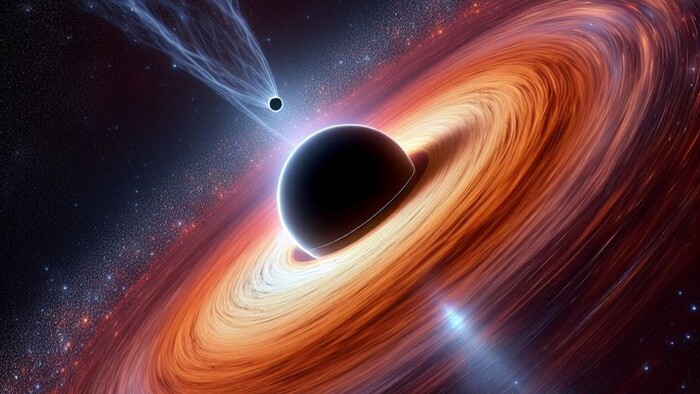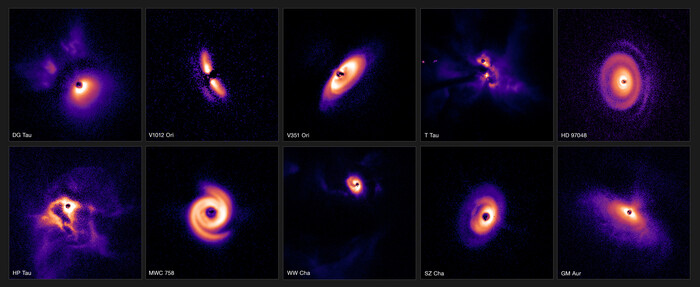By Denise Chow -
NBC News
Astronomers have detected tantalizing signals from a planet in a star system outside the Milky Way.
If confirmed, it would be the first to be found in another galaxy.
The discovery, reported in a study published Monday in the journal
Nature Astronomy
, demonstrates a new technique for finding distant worlds and could significantly broaden the search for so-called extragalactic exoplanets.
"It's always fun when you find something that is the first of its kind," said the study's lead researcher, Rosanne Di Stefano, an astrophysicist at the Harvard-Smithsonian Center for Astrophysics.
"Once we started finding planets locally, it made sense that there were planets in other galaxies, but this is humbling and really exciting," he added.
The possible planet was discovered in a spiral galaxy called Messier 51, also known as the
Whirlpool Galaxy,
which is
more than 23 million light-years from Earth.
[How will our solar system end? A distant planet offers clues]
The first
exoplanets,
or planets outside the solar system, were discovered in the 1990s, requiring a combination of complicated detection techniques.
However, since then, NASA missions like the Kepler Space Telescope and the Transiting Exoplanet Survey Satellite have uncovered a bonanza of worlds across the galaxy.
The inset indicates the location of a possible exoplanet detected outside the Milky Way in a composite image from the Hubble space telescope and the Chandra.R X-ray observatory.
Di Stefano / NASA / CXC / SAO
More than 4,000 exoplanets have been discovered and confirmed, but
until now they were all in the Milky Way.
Also, most have been less than 3,000 light years from Earth.
If confirmed, the planet in the Whirlwind Galaxy would be thousands of times farther away than any other alien planet that has been identified.
The possible alien world was found in a binary X-ray system, a type of star system that produces and emits X-rays and is usually made up of a normal star and a collapsed star, such as a neutron star or a black hole.
[A former NASA astronaut criticizes space tourism after Captain Kirk's 'star trek']
Astronomers normally use what is known as the "transit method" to search for planets.
Transits occur when a planet orbits in front of its parent star, temporarily blocking part of it and causing an observable dip in the star's light.
Di Stefano and his colleagues applied the same basic idea, but instead of optical light, they looked at changes in the brightness of X-rays from the Whirlpool Galaxy binary system.
Di Stefano said that the region that produces bright X-rays is relatively small, allowing it to detect transits that block most or all of the X-ray emissions.
[A Latina stepping on the surface of the Moon? This is how this fiction from NASA projects it]
"It is a very obvious sign," he said.
Using data from NASA's Chandra X-ray Observatory, Di Stefano and his colleagues observed that the transit lasted about three hours, and they were able to roughly gauge the size of the object because it completely blocked the X-ray source. They calculate that
the possible planet has the size of Saturn
and that it
is much farther from its star than Earth is from the Sun.
Bruce Macintosh, a professor of physics at Stanford University who was not involved in the research, said
the discovery is exciting
because, if verified, it shows not only that planets are common throughout the cosmos, but that they can also exist in places unlikely.
Captain James Kirk from 'Star Trek' travels to space in real life
Oct. 13, 202101: 42
"The impressive thing is that they have found a planet orbiting a neutron star that is part of a system that
has gone through a supernova explosion
and has had an interesting and complicated evolutionary history," he said.
"It is exciting that a planet can survive the explosion of its star," he said.
Confirming that there really is a planet in the binary X-ray system will likely take time.
The planet's distant orbit means that it will likely be about 70 years before astronomers can witness another transit.
"And because of uncertainties about how long it takes to orbit, we wouldn't know exactly when to look," Nia Imara, a co-author of the study and an adjunct professor at the University of California, Santa Cruz, said in a statement.
[Astronomers reveal a 'treasure map' to find the mysterious Planet 9 of the solar system]
Macintosh said the method of studying X-ray transits is "smart," but that it is unlikely that it can be used to find hundreds of thousands of planet candidates because it also depends on luck.
"You can only see transits when objects line up right between you and the thing you're looking at," he said.
"And you only see it when it passes in front of the target object for a few minutes or hours."
Still, Di Stefano said, it's gratifying that the new method of searching for extragalactic exoplanets, which she and her colleagues first theorized in 2018, has produced such a tantalizing result.
"We didn't know if we were going to find something, and we've been extremely lucky to have found something," he said.
"Now we hope that other groups around the world study more data and make even more discoveries," he concluded.



/cloudfront-eu-central-1.images.arcpublishing.com/prisa/TQ73US57UFGWTIXR7C3BS2OTIA.jpg)




